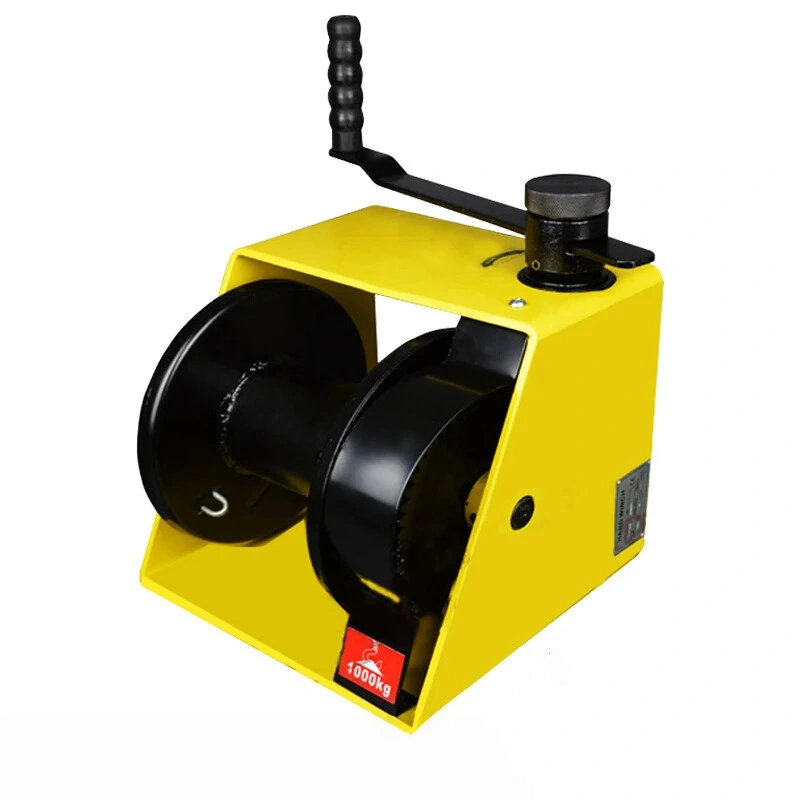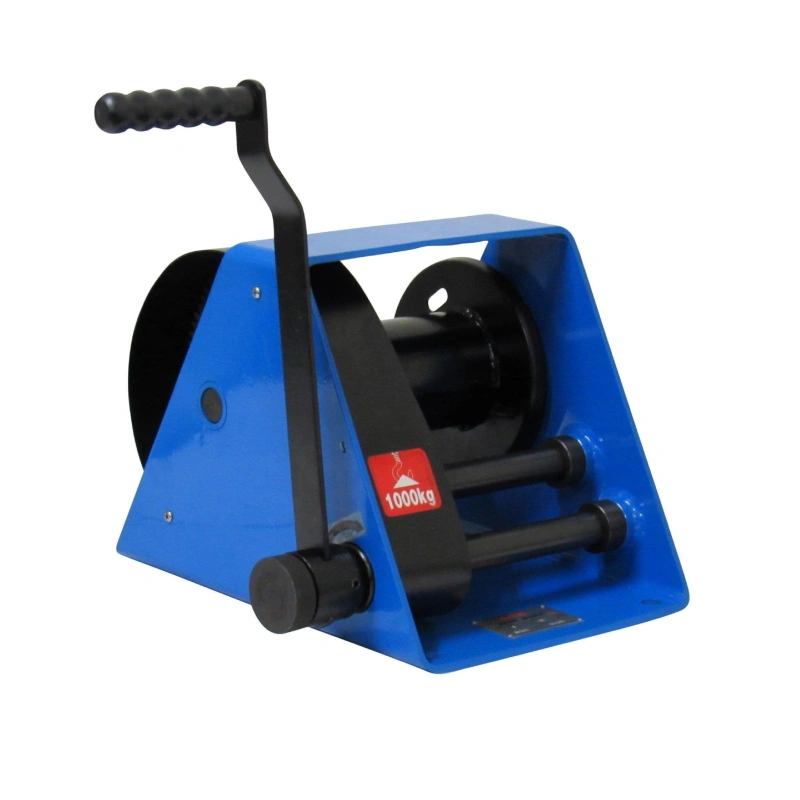Choosing between stud-link and studless chains for your anchor system depends on your vessel’s size, environment, and anchoring needs. Stud-link chains feature a stud in each link, providing higher strength and load capacity, making them ideal for large ships and critical anchorage applications.
Studless chains, with a smooth profile, offer flexibility and ease of handling, making them suitable for lighter marine applications. The table below shows the latest global trends:
| Chain Type | Advantages | Market Share (2024) |
|---|---|---|
| Studless Link Anchor Chain | Smooth surface, reduced wear, longer service life | Approx. % of revenue |
Powerful Machinery supplies certified Stud-link vs Studless Chains, helping you select the right solution for every marine project.
Key Takeaways
- Stud-link chains provide higher strength and durability, making them ideal for large vessels and critical anchoring tasks.
- Studless chains are lighter and more flexible, offering easier handling and storage, perfect for smaller boats and lighter-duty applications.
- Always check for international certifications when selecting anchor chains to ensure safety and performance in marine environments.
- Consider your vessel’s size, load requirements, and operating conditions to choose the right type of anchor chain for your needs.
- Regular maintenance, including inspections and proper storage, is essential for extending the life of both stud-link and studless chains.
Stud-Link vs Studless Chains Overview
What Are Stud-Link Chains?
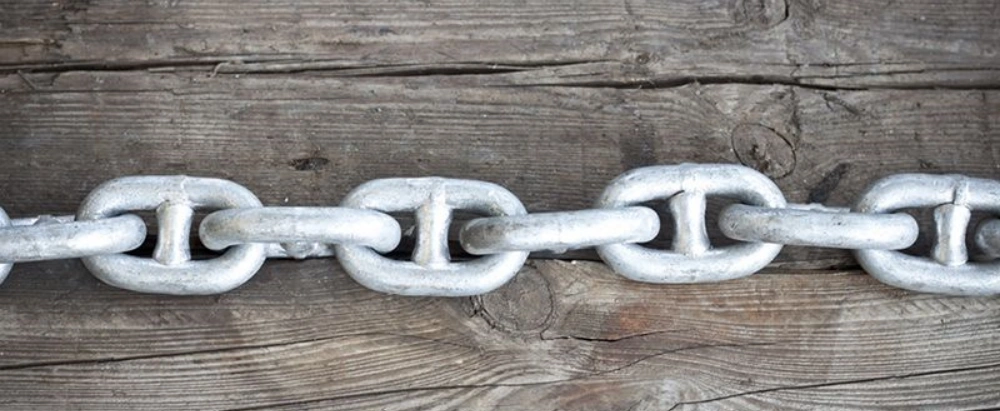
Stud-link chains have a central stud across each link. This stud increases the chain’s strength and helps prevent the links from deforming under heavy loads. You often see stud-link chains on large commercial vessels and offshore platforms. The stud design gives these chains higher tensile strength and better wear resistance.
They are heavier and less flexible, which makes them more challenging to handle and store. Powerful Machinery manufactures stud-link chains that meet strict ISO standards and hold certifications from organizations like CCS, EC, GL, and ABS.
These chains work well for anchor systems that demand maximum reliability and durability.
What Are Studless Chains?
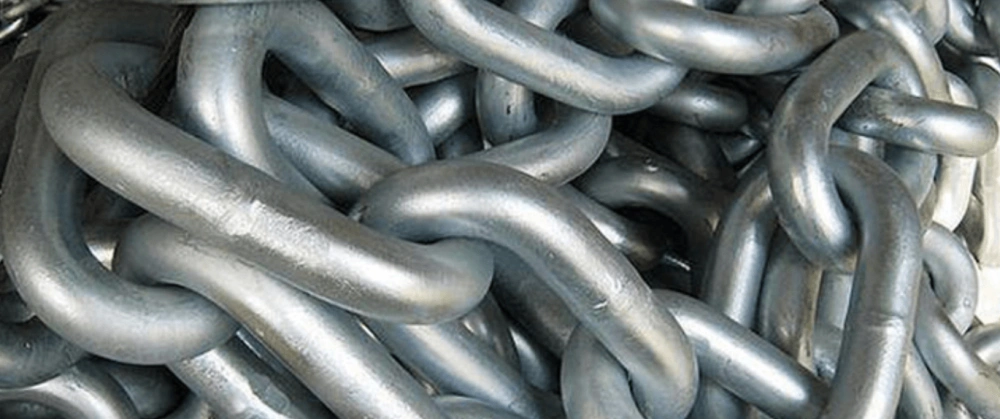
Studless chains do not have a central stud in each link. This design makes them lighter and more flexible than stud-link chains. You will find studless chains on smaller vessels, recreational boats, and flexible mooring systems. Their smooth profile allows for easier handling and storage, especially in tight spaces.
While they offer less tensile strength and wear resistance, their flexibility suits lighter-duty anchor applications. Powerful Machinery produces studless chains using high-quality materials, ensuring they meet international standards and certifications.
You can choose from various sizes and finishes to match your specific marine needs.
Here is a quick comparison to help you understand the main differences:
| Feature | Stud-Link Chains | Studless Chains |
|---|---|---|
| Design | Central stud reinforces each link | No central stud |
| Strength | Higher tensile strength | Generally, lower tensile strength |
| Weight | Heavier | Lighter |
| Flexibility | Less flexible | More flexible |
| Wear Resistance | Better wear resistance | Less wear resistance |
| Handling | More difficult to handle and store | Easier to handle and store |
| Applications | Large commercial vessels, offshore platforms | Smaller vessels, recreational boats, and flexible mooring systems |
Powerful Machinery brings over 20 years of experience in producing both stud-link and studless chains for marine anchor systems. You can trust their certified products for safety and performance in any marine environment.
Stud-Link Chains Features
Stud Link Anchor Chain Construction
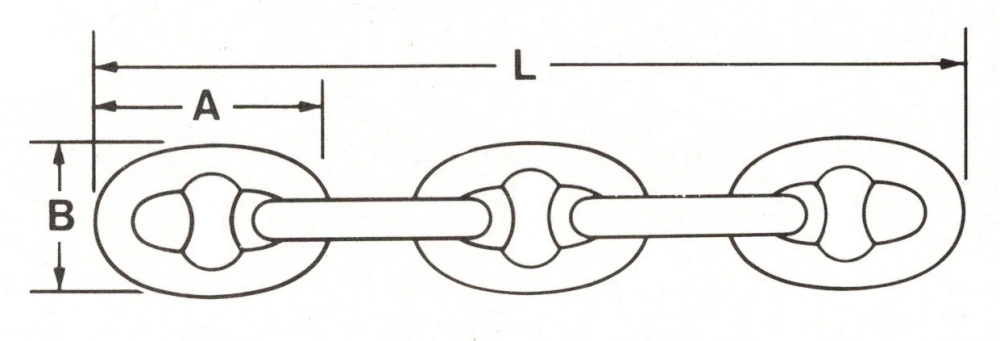
When you look at a stud link anchor chain, you notice a solid bar, or stud, across the center of each link. This stud keeps the link from deforming and helps the chain handle heavy loads. You often see these chains on large ships and offshore platforms because they need to anchor securely in tough conditions.
Manufacturers build stud link anchor chains to meet strict industry standards. These standards ensure the chains have the right strength and durability for marine use. The table below shows the main grades and their mechanical properties:
| Grade | Yield Strength (N/mm², min) | Tensile Strength (N/mm², min) | Elongation (%, min) | Reduction Of Area (%, min) | V-notch impact test Temperature | V-notch impact test Impact |
|---|---|---|---|---|---|---|
| 2 | >295 | 490~690 | >22 | – | 0 | >27 |
| 3 | >410 | >690 | >17 | >40 | 0 | >50 (weld) |
| 4 | >490 | >770 | >12 | >50 | -20 | >45, >33 (weld) |
You can see that higher grades offer more strength and toughness. This is important when you need a high strength-to-weight ratio for your anchor system.
Technical Advantages of Stud-Link Chains
Stud-link chains give you several technical advantages over other types. You get:
- Enhanced load-bearing capacity and structural integrity, which is vital for high-stress marine applications.
- A design that prevents kinking, so your anchor chain stays safe and reliable during use.
- Greater resistance to deformation, which helps the chain last longer under heavy loads.
When you compare stud-link vs studless chains, you find that stud-link chains provide more structural reinforcement. This makes them the top choice for commercial vessels and offshore projects.
You should always look for chains with the right certifications. Powerful Machinery supplies stud link anchor chain products that meet or exceed international standards. The table below lists some of the main certifications and organizations:
| Certification | Organizations |
|---|---|
| CCS | China Classification Society |
| ABS | American Bureau of Shipping |
| BV | Bureau Veritas |
| NK | Nippon Kaiji Kyokai |
| KR | Korean Register |
| GL | Germanischer Lloyd |
| LR | Lloyd’s Register |
| DNV | DNV GL |
| RINA | Registro Italiano Navale |
| RMRS | Russian Maritime Register of Shipping |
Tip: Always check for these certifications when choosing a stud link anchor chain for your vessel. This ensures you get the best safety and performance.
Studless Chains
Studless Chains Design & Materials
When you choose a studless anchor chain for your marine project, you want to know what makes it reliable. Powerful Machinery designs these chains with high-quality materials to ensure strength and long service life.
You can find studless anchor chain options made from hot-rolled anchor steel, CM490, CM690, and stainless steel grades like 316 and 316L. Stainless steel 316 and 316L give you excellent corrosion resistance, which is important for saltwater environments.
The chains come in different finishes, such as hot-dip galvanized or black painted, to add extra protection.
Here is a table that shows the most common materials and properties for studless anchor chain:
| Material Type | Properties |
|---|---|
| Hot-rolled anchor steel | Commonly used for durability |
| CM490 | Specific grade of steel |
| CM690 | Higher grade for strength |
| Stainless steel 316 | Corrosion-resistant option |
| Stainless steel 316L | Lower carbon variant of 316 |
| Finishing | Hot dip galvanized, black painted |
| Diameter Range | 12.5mm to 162mm |
| Studless Chain Grades | 2, 3 |
Powerful Machinery ensures every studless anchor chain meets international standards, including RINA and BV certifications. You can trust these chains for safety and performance in marine anchoring.
Advantages of Studless Chains
You get several benefits when you use a studless anchor chain. The smooth design makes the chain lighter and easier to handle than other types. You can move and store it with less effort, which helps on smaller vessels or in tight spaces.
The flexibility of studless chains allows them to fit around winches and through hawse pipes without jamming.
Corrosion resistance stands out as a key advantage. Stainless steel and galvanized finishes protect the chain from rust, even in harsh saltwater. This means your anchor system stays reliable for a longer time.
Customization is another strong point. You can select the right dimensions, materials, and finishes to match your project needs. Here is a quick look at the customization options available:
| Customization Aspect | Details |
|---|---|
| Dimensions | Customizable based on project needs |
| Materials | Various materials can be selected |
| Finishes | Different finishes available to meet specifications |
Tip: If you need a chain that is easy to handle, resists corrosion, and fits your unique anchor system, a studless anchor chain is a smart choice. Powerful Machinery offers custom solutions to help you get the best fit for your vessel.
You can see why many marine professionals prefer studless anchor chain for flexible, lighter-duty anchoring. When you compare stud-link vs studless chains, you notice that studless chains offer unique advantages for handling and adaptability.
Advantages & Disadvantages
Strength & Durability
When you compare stud-link vs studless chains, you see clear differences in strength and durability. Stud-link chains have a central stud that reinforces each link. This design gives you larger tensile strength and less deformation under heavy loads.
You often use stud-link chains for anchor systems on large vessels or offshore platforms where maximum reliability is needed. Studless chains also provide high strength and durability. They are critical in offshore mooring systems and many marine projects.
Their smooth profile allows for continuous performance, even in challenging environments.
| Chain Type | Strength | Durability | Flexibility |
|---|---|---|---|
| Stud Link | Larger tensile strength | Smaller deformation under stress | Less likely to get entangled |
| Studless Link | High strength and durability | Continuous smooth profile | Greater flexibility |
Flexibility & Handling
You will notice a big difference in flexibility and handling between these two types of chains. Studless chains provide greater flexibility. You can handle and store them more easily, especially on smaller vessels or in tight spaces.
Their lighter weight makes them practical for temporary mooring and lighter-duty applications. Stud-link chains, while stronger, are heavier and less flexible. You may find them harder to maneuver, but they resist entanglement and kinking during anchor operations.
- Studless chains are lighter, which helps with installation.
- Their flexibility allows for different storage arrangements.
- Stud-link chains are less likely to get tangled, which is useful on large ships.
Maintenance & Storage
Both stud-link and studless chains require regular maintenance to ensure long service life. You should inspect for corrosion, worn links, and apply lubrication to reduce wear. In saltwater environments, use corrosion inhibitors and clean the chains to remove marine growth.
For storage, stud-link chains need an organized layout with separators or guides to prevent tangling. Larger vessels often use reinforced floors to support their weight. Studless chains, because of their flexibility, allow for different storage setups and are often chosen for smaller vessels to save space.
| Maintenance Aspect | Stud-Link Chains | Studless Chains |
|---|---|---|
| Regular Inspections | Check for corrosion, worn links, or deformed studs. | Similar checks for wear and corrosion. |
| Lubrication | Apply anti-corrosive grease to shackles and swivels. | Lubrication of chain components is essential. |
| Proper Storage | Keep chains dry and coiled to prevent kinking. | Store in a manner that prevents damage. |
Tip: Regular cleaning and proper storage help both types of chains perform better and last longer in marine projects.
Applications & How to Choose
Typical Uses for Stud-Link Chains
You often see stud-link chains in high-stress operations across the maritime sector. These chains work best for large vessels, such as cargo ships, oil tankers, and offshore platforms.
The stud link anchor chain design gives you extra strength and prevents deformation, which is critical when you anchor in deep water or face strong currents. You rely on these chains for towing, heavy-duty mooring, and other demanding maritime applications.
Their robust construction ensures safety and stability during long-term anchoring or when you need to secure a vessel in rough conditions. Many shipowners choose stud-link chains for their durability and ability to handle the toughest loads.
Typical Uses for Studless Chains
Studless chains have become popular in modern marine projects, especially where flexibility and easy handling matter most. You find studless anchor chain options on smaller vessels, coastal boats, and in offshore renewable energy projects.
Their lighter weight and smooth profile make them ideal for shallow waters and frequent mooring adjustments. You benefit from their corrosion resistance, which helps in saltwater environments.
These chains also suit temporary mooring, lighter-duty anchoring, and situations where you need to move or store the chain quickly. In many typical applications, such as coastal towing or supporting floating platforms, studless chains provide the adaptability you need.
Note: Studless chains are especially effective for operations that require frequent repositioning or where space is limited. Their design reduces wear and makes them easier to manage during daily tasks.
Selection Guide for Marine Projects
Choosing between stud-link vs studless chains depends on your vessel, load requirements, and operating environment. You need to match the chain type to your specific marine applications for the best results.
Here is a quick comparison table to help you evaluate environmental factors:
| Chain Type | Strength | Flexibility | Weight Savings | Handling Ease |
|---|---|---|---|---|
| Stud-Link | High | Moderate | Low | Moderate |
| Studless | Moderate | High | High | High |
When you select an anchor chain, consider these steps:
- Assess your vessel’s length and weight.
- Choose chains with higher load-bearing capacities for larger and heavier vessels to ensure stable anchoring.
- Match the chain size to your anchor shackle and vessel displacement.
- Check that the chain meets international standards, such as ISO 1704.
- Confirm certification from recognized classification societies for safety and compliance.
- Review the minimum breaking load and proof load to ensure the chain exceeds your expected working load.
- Evaluate the total cost of ownership, including service life and maintenance needs.
- Ensure compatibility with your existing anchor system.
- Select a supplier with ISO 9001 certification and strong after-sales support.
You can use this checklist to guide your decision:
- Vessel size and type
- Required load capacity
- Operating environment (deep or shallow water, saltwater exposure)
- Handling and storage needs
- Corrosion resistance requirements
- Certification and compliance
- Customization options
Powerful Machinery offers custom-engineered solutions for both stud-link and studless anchor chains. You can work with their team to select the right chain for your marine projects, ensuring safety, reliability, and performance in every application.
Conclusion
Choosing the right anchor chain depends on your vessel size, environment, and handling needs. Stud-link chains offer strength for heavy-duty tasks, while studless chains provide flexibility and easy handling. You can trust Powerful Machinery for certified solutions that fit your project.
Use this checklist for your next selection:
- Vessel size and type
- Required load capacity
- Handling and storage needs
- Certification and compliance
FAQ
What is the main difference between stud-link and studless chains?
You will notice that stud-link chains have a bar across each link, which adds strength. Studless chains do not have this bar. This makes studless chains lighter and easier to handle.
Can you use a studless chain for any anchor system?
You can use a studless chain for many anchor systems, especially on smaller vessels. Always check the chain’s size and strength to match your anchor and vessel requirements.
How do you maintain marine anchor chains?
You should rinse your chain with fresh water after use. Inspect for rust or damage often. Apply a rust inhibitor and store the chain in a dry place to extend its life.
Are studless chains resistant to corrosion?
Yes, studless chains from Powerful Machinery use galvanized or stainless steel. These materials resist corrosion well, even in saltwater environments.
Can you customize the length and material of your anchor chain?
You can request custom lengths and materials for your chain. Powerful Machinery offers options to fit your specific marine project needs.

